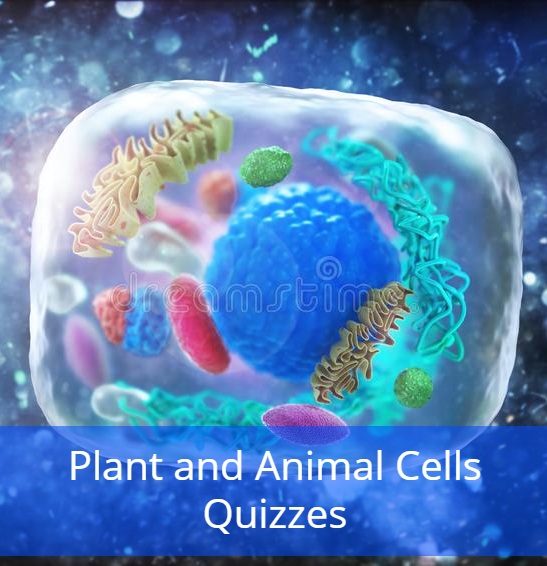Plant and Animal Cells Quizzes
Quiz Description
Revising Plants and Animal Cells with quizzes
(Simple plant and animal cell quizzes for students going in for the GCE, GCSE, and necta)
Welcome to gcequiz platform, the perfect place to test your knowledge.
In this section, we will be discussing plants and animal cells. There are many differences and similarities between the plant and the animal cell. For example, the plant cell has a cell wall but the animal cell doesn't. All these differences will be seen clearly with the aid of revision quizzes made available below. Let's have a quick review of the concept:
A cell is the basic unit of structure and function of all living organisms. They are often called the " building blocks of life ". There are 2 main classes of cells which are: The plant cell and the animal cell.
The Plant Cell: Plant cells, also an example of eukaryotic cells are those cells found in green plants. They are different from other cells due to certain features they possess such as having a cellulose cell wall, having a large vacuole that regulates turgo pressure, availability of plastids with the ability to carry out photosynthesis (A process by which green plants and other photoautotrophs use sunlight in the presence of carbon dioxide to manufacture their food, releasing oxygen as a by-product), etc
The Animal Cell: Also known as an example of eukaryotic cells are those cells found in animals. They are different from plant cells in that they lack the cell wall. This absence of the cell wall enables the animal cell to transform into a variety of shapes.
In the exams, students are expected to be able to identify, draw, and annotate the diagrams of a plant cell and an animal cell. The various similarities and differences between the two should be clearly understood by the candidate. For more practice quizzes, click here.
This platform is here to assist students going in for their various examinations (GCE, GCSE, and NECTA) by making available practice quizzes to facilitate their revision process. For more info and quizzes, visit gcequiz.com.



